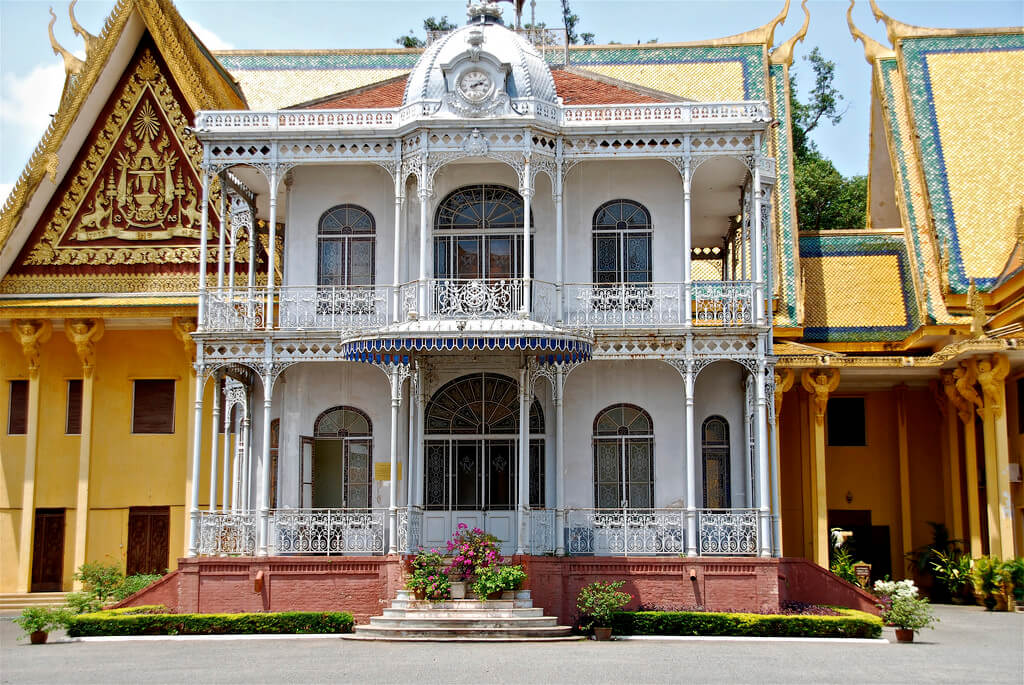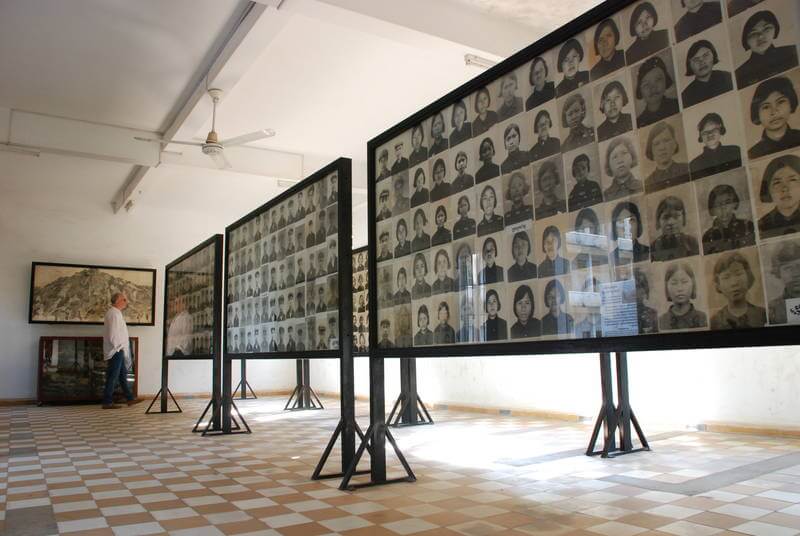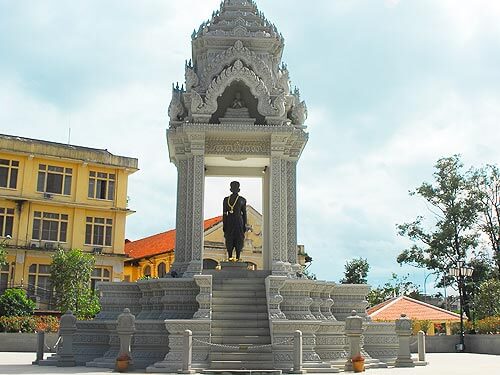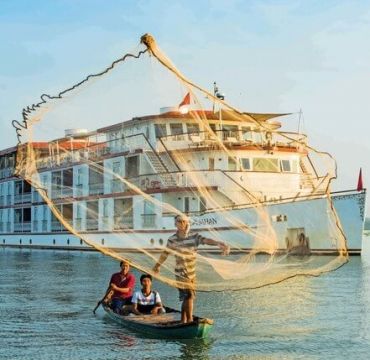Phnom Penh - The Attractive Riverside City
by Seni World Mar 08, 2024
Once known as the Pearl of Asia, there’s no doubt that Phnom Penh is a tourist hub in the Land of Wonder. This biggest city which is located near the Tonle Sap River is the combination between the past and the present. It offers visitors several cultural and historical attractions as well as a variety of modern services.
Once known as the Pearl of Asia, there’s no doubt that Phnom Penh is a tourist hub in the Land of Wonder. This biggest city which is located near the Tonle Sap River is the combination between the past and the present. It offers visitors several cultural and historical attractions as well as a variety of modern services.
What Created the Name of Phnom Penh
Almost names of cities have stories behind them and Phnom Penh is no exception. There is a story passed down from generation to generation about a wealthy lady called Penh or Duan Penh (which means Grandma Penh).
She lived in a village near Tonle Chaktomuk River where almost people were Buddhist. One day, after the heavy rain had stopped, she went to the riverside to see if the flood had caused any damage. She found a koki tree floating down the stream. After pulling the tree up to the bank, she found four bronze statues of Buddha and a stone statue of Vishnu inside it. With purpose of worshiping, she and villagers used the koki tree to build a temple as a house for Buddha statues on a small hill of 27 meters in height. The temple was named after the elderly lady Wat Phnom Daun Penh and then was shortened to Wat Phnom. The surrounding area of this famous temple was known as Phnom Daun Penh and was called Phnom Penh later. In Khmer language, Phnom means Hill, so the name of the city now means “the hill of the lady Penh” and Wat Phnom can be called “hill temple”.
In 1431-32 King Pohea Yat left the Angkorian capital and set a new one in Phnom Penh. It was the capital city in 73 years from 1432 to 1505. Then; it was abandoned for 360 years because of the internal fight between the royal residents. It was not until 1865 that King Norodom decided to move the royal court from Oudong to Phnom Penh, which made “the hill of the Lady Penh” become the permanent capital of Cambodia.
Cambodia once was the French colony, which had strong impact on Cambodia in general and Phnom Penh in particular. In this period, thanks to the civic structures, canals and buildings, Phnom Penh gained the nice fame as the “Pearl of Asia”. However, in 1975 when Khmer Rouge took power, Phnom Penh was forced to live in the darkest time of their lives. This place was seen as a ghost town where almost infrastructures were damaged or destroyed and a large number of people were killed. One of the existing evidence now is the Tuol Sleng Genocide Museum.
» Throwing off the shadow of the past, Phnom Penh now is the cultural, economic and political centre of Cambodia, where the historical values are still maintained and conserved. If interested, join us in the Phnom Penh to Saigon River Cruises and get to know more about not only Phnom Penh but also the vibrant Saigon city as well as interesting things en route.

Top 5 Best Things to See and Do in Phnom Penh
Independence Monument
Standing on the intersection of Norodom Boulevard and Sihanouk Boulevard is a lotus-shaped monument. It was primarily built in 1958 to celebrate the independence of Cambodia from the French in 1953. But later, it also serves as a memorial to those who sacrificed their lives for the welfare of the country. The 20-meter monument was designed by Vann Molyvann in Khmer style with shape of lotus and adorned with Naga heads. In the late afternoon, it’s really one of the highlights in Phnom Penh with blue, red and white floodlights around it. These colors symbolize the national flag.

Royal Palace
Royal Palace complex, built in 1860s, is particular example of Khmer and European architectural elements in Phnom Penh. It is located near Tonle Sap River and faces to the East. 9 buildings in this complex leave strong impression on visitors by their classical Khmer roofs adorned with traditional patterns and ornate gilding. Each of them has it own function and decoration. For example, Throne Hall, the 59-meter tower having the golden colored tiles on the roof is used for official celebrations and religious events. Another example is Napoleon III Pavilion which was entirely built in European style. It first was built for wife of Napoleon III. But later it was given to King Norodom as a gift, which makes the royal complex become more special.

Silver Pagoda
Due to the silver floor tiles, Wat Preah Keo Morokat is known as Silver Pagoda nowadays. It was originally built by wood in 1892 and in 1962 it was rebuilt in concrete and marble. Visitors can find the Indian marble on the stairway leading to Silver Pagoda. Beside the beautiful shape and sculptures, the 90kg golden standing Buddha which is adorned with more than 2000 diamonds is one of outstanding things in this pagoda. Moreover, Silver Pagoda complex also is the place where you can find other amazing structures, for example, Keong Preah Bath which contains Buddha footprint, model of Angkor Wat and many King’s tupas.

Wat Phnom
The temple in the legend is worth paying a visit when visitors come to Phnom Penh. The stairway leading to Wat Phnom is decorated with seven-head nagas and some different statues on its both sides. The “hill temple” offers visitors a closer look to Buddhism with paintings on the wall, the arrangement of altars and statues inside the main pagoda. Moreover, going around the main pagoda visitors also find statues of King Sisowath, a big clock and the big stupa which nearly the same with stupa on Oudong mountain.

Tuol Sleng Museum of Genocidal Crimes
One of the reminders about the horror life in Cambodian history is Tuol Sleng Museum of Genocidal Crimes. It formerly was a high school, but under the rules of Khmer Rouge it was used as a prison called “security prison 21” or S-21. Nowadays, it is a museum that displays the crimes of Khmer Rouge. It’s the place where visitors partly understand the tragic life of Cambodians through some existing things, for example, portrait of almost 6,000 people with different stories, several cells divided from classrooms to detain prisoners, etc ...

Having an excursion to Phnom Penh, visitors also should not ignore some other attractions such as the Killing Fields, Central Market or National Museum by any reason.
» Consider our Cambodia River Cruises to get a chance to know more about this country!










![[Must Read] The Best Time for A Cruise on Mekong River [Must Read] The Best Time for A Cruise on Mekong River](https://topmekongcruises.com/thumb/crop/1188/90/90)


































